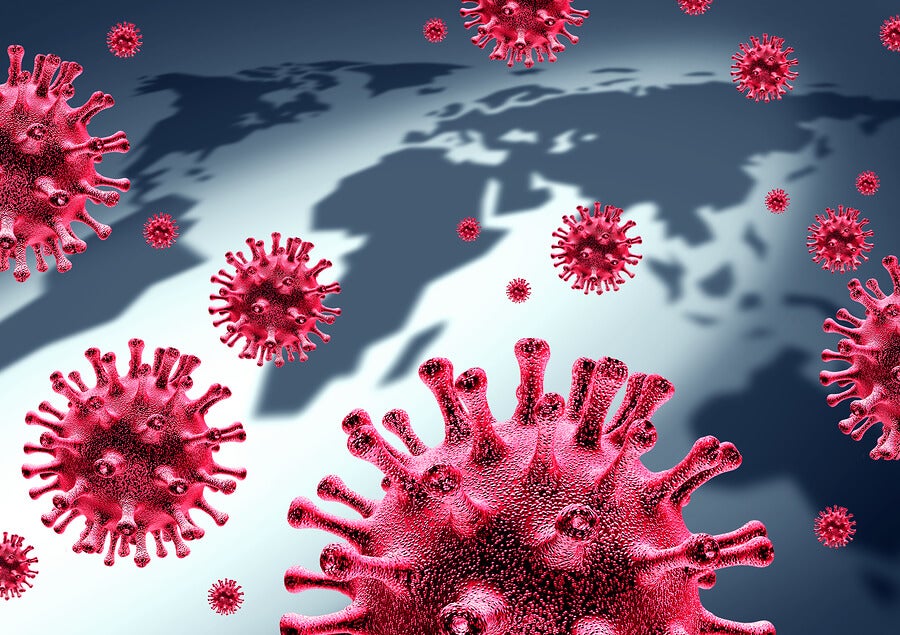What Is A Pandemic?

According to the definition of the Royal Spanish Academy, a pandemic “is an epidemic disease that extends to many countries or that attacks almost all individuals in a locality or region .” In other sources it appears defined as the affectation of an infectious disease of humans, throughout a geographically extensive area.
The term comes from the Greek “pandemos”, which means “gathering of all the people”. The suffix pan means “everything”; and “demos”, people. Therefore, in the very etymology of the word underlies the idea or belief that it is a phenomenon that affects, or can potentially affect, everyone.
The World Health Organization (WHO) defines it as the spread of a new disease worldwide. In the past, this organization included in the concept the characteristic of significant mortality, with respect to the affected population.
Conditions for a pandemic to occur
The World Health Organization (WHO) indicates that certain conditions must be met for a pandemic to break through in a region, or throughout the world. The main one is that a new virus appears, one that has never circulated and that, therefore, there are no people who have suffered from it. This makes no one immune to it.
The second condition is that this new virus has the capacity to cause serious illness. And the third, which clearly describes the characteristic of massive contagion, that is, that the virus is capable of being transmitted, from person to person, more or less efficiently.

Concepts associated with the pandemic
Associated with the concept of pandemic are those of endemic, epidemic and epidemic outbreak. The endemic refers to the usual prevalence of a disease, in a certain geographical area or population group.
An epidemic refers to when, in a community or defined geographical area, cases of a disease appear, with a higher frequency than is commonly expected. Meanwhile, an epidemic outbreak is the appearance of two or more cases of the same disease, associated in time, place and person.
Phases of a pandemic
There are six phases in the full development of a pandemic. During the first, the virus circulates between animals without causing infections in humans. Already in phase two, the virus that circulates among domestic or wild animals has managed to be the cause of infections in humans and is considered a threat.
In the third phase, this animal virus, or human animal, causes sporadic cases or only in small human conglomerates, without reaching a transmission from person to person; it is also not powerful enough to cause community outbreaks.
In the fourth phase, the virus becomes capable of generating person-to-person transmission. During the fifth phase, the spread of the virus takes place in two countries covered by the WHO. And, finally, in the sixth phase, the contagion occurs in a third country (at least) with the appearance of community outbreaks.
It is during the last two phases that health measures to safeguard global health must be organized, communicated, and put into practice.

Human history data
When reviewing the history of mankind, one can find many accounts of more or less tragic pandemics. It is important to highlight that they have been present at different times in world history, with different consequences, according to the affected societies and their scientific, economic, social and cultural development.
One of the first pandemics dates back to 430 BC, during the Peloponnesian war, and it could have been typhoid fever. Another of the best known was the Black Death that struck Asia and Europe during the 14th century. Cholera crossed all continents during the 19th century.
Among the most recent of these pests is HIV, the virus that causes AIDS (Acquired Immune Deficiency Syndrome), whose first cases date back to the 80s of the 20th century. HIV is so widespread that it has been considered one of the worst pandemics in recent centuries.
There is also the influenza A (H1N1), known as “swine flu”, which had a crisis in 2009 and 2010; Ebola, which was registered for the first time in the mid-1970s, and bird flu detected during the years 2003 and 2004. Currently, the world is threatened by one of the most widespread pandemics in history: Covid-19.









